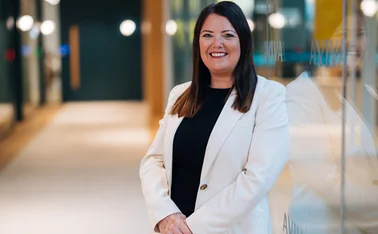
Power hour: Driving change in motor trade

The motor trade market is evolving with the rise of autonomous vehicles, electric cars and changing consumer purchasing habits, but the sector still also has to deal with more traditional risks
 |
What is the current state of the motor trade market?
▶ Mark: Over the last few years, the motor trade industry, along with construction, has probably seen one of the biggest improvements in the UK. Not only has the market been growing but there’s also been diversification. Businesses will change again with autonomous and electric vehicles and the changing purchasing habits of consumers. As an industry, we have to consider how we develop our products and services to meet the demands of the customer.
▶ Andrew: We’re seeing a lot of consolidation within the multi-franchise dealers. There are positive and negative outcomes of that. Our major focus is on looking after the clients that we have and making sure when consolidation happens that we can offer services to larger and larger groups.
▶ Alex: A lot of clients are seeing growth in the new car sales. It’s slightly harder in the used market because stock is difficult to get hold of and prices are being raised. We are seeing significant growth across the board with our existing book of clients.
▶ Graham: Motor trade’s quite a broad word. There are a lot of sectors within it. You’ve got logistical movement of vehicles right through to classic cars, to body shops to service and repair. In their sectors there’s a pressure on price. When they’re buying [insurance] themselves they use that same mentality.
So is motor trade a price driven market?
▶ Mike: It’s always been price driven but there’s also the education process of trying to add more value. It is important to take ownership of management information particularly on claims data. Then they [clients] can suddenly realise getting claims down also drives the premium down. It’s about working in a tripartite relationship with insurers.
▶ Tim: Our main motor trade market is SME. The idea that you’re selling service and the risk management and the aftercare isn’t restricted to the corporate market. You can educate that lower end into buying on more than price.
 |
What are the current issues around theft for the motor trade market?
▶ Mike: There are precious metals in catalytic converters. We’re seeing a big spike this year among thefts of them.
▶ Mark: If we go back 15 years there was a big spike in vehicle thefts or thefts of tools. The insurance industry worked with customers to think of ways in which that could be improved. Over a 10-year period we saw a year-on-year reduction in thefts. But over the last few years it’s started to creep up again. The industry must communicate and work with customers to ensure they’re aware of risks and think of ways in which we can protect business.
▶ Pauline: Thieves now can hack your wifi to your car, can’t they? For higher end value vehicles they are stealing and then parking them to see if there’s a tracker installed. They’re getting a lot more savvy and we need to be one step ahead.
▶ Leon: The spike in thefts is to do with the technology that’s evolving. For keyless entries the problem is that they’re attackable. We need to start looking at the likes of cyber.
They might not necessarily just steal the car. If you can hack in and take over the controls, that’s the real risk we have here. We need to make sure we’re evolving with the technology as an insurance sector to keep up with the pace.
▶ Joe: A lot of the technology is still relatively new. If the technology allows you to mirror in your car what is on your phone and you’re using your phone for work purposes then somebody able to hack that can get all the sensitive data from your work.
There’s all sorts of cyber issues that are lurking around the corner. It’s only going to be a matter of time for these criminals to devise a way of actually getting that information. The actual value of the vehicle is almost going to become irrelevant, because the value of what’s being held in the vehicle, from a data point of view, is probably where the money’s going to lie.
Are repair costs going up?
▶ Mark: The pace of change in terms of technology is far greater. It probably took 30 years to move from something like the seatbelt to where we are now in terms of autonomous braking which you’d argue will ultimately reduce the claim frequency and therefore dissipate some issues.
Repairing a windscreen is much more complicated than it used to be because of all the features within it. And that’s not going to go away. That’s just going to intensify over the coming years.
▶ Tim: Putting a bit of glass back in a car is a prolonged process now. But we are in the situation where the technological developments are racing ahead. There is definitely a skills shortage within the trade. Not just body repairs, across the whole aspect of motor trade. We’re getting to a situation where those skills, such as panel beaters and painters, are actually needed less because of the way that the technology is developing. I can only see that getting much worse as we move forward.
 |
What about the more traditional risk of fire, is it still a well monitored threat?
▶ Alex: Most of the main dealers these days are on top of their own sort of fire risk assessment and the issues that can occur. But if you go round a small SME motor trader they still do a lot of welding and sparks are flying everywhere. I’m not convinced that they wholly appreciate what can go wrong. It boils down to us, as brokers, educating the client about what they should be doing on fire risk assessments and also insurers getting involved with risk surveyors.
▶ Leon: Some guys just want the annual motor set. That’s all they want the traders’ insurance for. But it’s down to us to actually go that step further and certainly on the smaller end of the spectrum, we need to be educating them. You go up to the multi-franchise dealers, the bigger body shops, nine times out of 10 they’ll have someone that’s across the risk management side of things. They’re normally nice and clean, they’ve got all their health and safety checklists, fire risk assessments, etc, all on file.
▶ Adrian: In terms of managing the risk, I agree, there are certain parts of the trade sector that are better at it than others. It does tend to go with the size of the risks.
A lot of the main dealerships tend to have a much more heightened awareness of catastrophe-type events, such as fire, because they know that it could take out the whole location. It could really hurt them. Some of the risks at the lower level are sometimes a little bit more challenging.
▶ Graham: There are risks we go into where there’s a lot of naivety. Maybe the broker does two or three of those types of risks and it isn’t their core revenue. We see it time and time again where the buildings, quite a core asset to the business, haven’t been valued in the last 10 years. Then you then find there’s a complete underinsurance process.
▶ Pauline: Time and time again, the account manager goes in and the amount of underinsurance is alarming. A lot of the time, for us going in on a new risk it’s a full education process.
▶ Tim: Some of the stuff we’ve inherited is terrifying. You pick some risks up and you just think, what, how? It’s still out there and there is a lot of poor advice, generally from brokers who have very, very few motor trade risks on their books and never visit them.
▶ Alex: It is very important that the clients have surveys because it also picks up on potential areas that can cause issues if there is a claim.
I think underinsurance is a massive area. I’ve said to my clients, ‘well how much is it to replace that tool box?’, and they’ll always say £30,000. That’s always the number. But the reality is it’s not £30,000 anymore. It’s about educating them about what it’s going to cost if they have to go out and replace everything following a fire.
What is the appetite for business in the motor trade insurance market?
▶ Leon: We’re at that end of the cycle now where motor trade is making a bit of money for insurers. They are widening their footprints a little bit and those that wouldn’t write it before are, all of a sudden, coming to the table. They wouldn’t have experienced some of the losses when the cycle was at the opposite end. And because of that sometimes the rates are a little bit more keen than what they should be. New brokers that you’ve never even heard of are trying to come in to the motor trade fold as well.
▶ Andrew: You’d like to think that the Insurance Act might have something to do about new entrants coming in, discussing subjects that they’re not necessarily au fait with. The Insurance Act will, hopefully, make some of the brokers that are trying to enter into the market think, ‘we need to know what we’re talking about before we can speak to these clients’.
▶ Tim: I think we’re all agreed that motor trade can be a bit of a dog fight at times. New players come and new players go. We’ve seen it all before and you get to the point where you just think, yes well they’re another irritation but they’ll not be here in two years’ time because they’re undercutting the market by 40% and that won’t work.
▶ Leon: The customer is the victim in all this. That’s the most annoying thing.
▶ Pauline: We have really healthy retention rates in the motor trade division. We give them the best of pricing but, at the end of the day, if it’s a silly price we will walk away.
▶ Mike: Getting the insurer in front of the client is key, maintaining contact, not just at the point of picking the business up, but also the six monthly reviews and having claims meetings. It’s not just about the price because good insurers will be price approximate anyway. It’s everything else that they can do to support the business and their plans.
▶ Adrian: Relationships with clients are very important. We very much value dealing with brokers who have staff who know the sector. I feel it is a different type of industry. We want to continue to grow and develop with people who are very experienced.
What are the flood insurance issues for the motor trade market?
▶ Mark: Motor trade is quite unique in terms of flood risk because of the vehicle exposure. Most commercial risks are not going to have hundreds or thousands of vehicles in and around their premises. Vehicles are clearly susceptible. We talk about contingency planning – how do you try and look at ways in which you can mitigate loss? Probably the good thing about vehicles is you can move them, so what types of plans are in place to mitigate that risk?
▶ Joe: The difficulty with flood is that the general information that’s available to the public actually contrasts with what insurance people are trying to tell them. You will get something built on potentially flood risk land but you are advised by the local council, the builders and everybody that you should be taking advice from as a consumer that it’s okay to purchase that property.
When the insurance person comes along and says, ‘actually this is a flood risk’ you’ve got all the other experts saying, ‘this has never flooded, it’s not going to flood, we’ve put the relevant defences in’. And then, lo and behold, we have a downpour. It’s almost the insurance industry versus the world.
▶ Pauline: Our frustration, from the broking perspective, is that the insurers are not joined up. Their flood mapping differs. I’ve seen a huge shift since March. Underwriters have changed their strategy on flood. They’ve gone from offering cover with an excess to saying ‘no flood cover at all’. What’s happening is the markets available to the client are shrinking more and more.
▶ Adrian: From an Allianz point of view we have up-to-date flood modelling programmes which were put together by experts. The challenge that we have is that lots of areas of the country maybe haven’t had flood issues or haven’tflooded for a number of years. But we’re obviously always trying to project forward and see what the likelihood is of these events happening.
▶ Graham: Get a local surveyor for each area with local knowledge. Take each case on its merit, understanding the risk profile by getting a pre-cover survey, just walking around the site – is it [the building] on the top of a hill? Sometimes [good] risks [in a flood postcode area] get sort of tarred with the same brush.
Only users who have a paid subscription or are part of a corporate subscription are able to print or copy content.
To access these options, along with all other subscription benefits, please contact info@insuranceage.co.uk.
You are currently unable to print this content. Please contact info@insuranceage.co.uk to find out more.
You are currently unable to copy this content. Please contact info@insuranceage.co.uk to find out more.
Copyright Infopro Digital Limited. All rights reserved.
As outlined in our terms and conditions, https://www.infopro-digital.com/terms-and-conditions/subscriptions/ (point 2.4), printing is limited to a single copy.
If you would like to purchase additional rights please email info@insuranceage.co.uk
Copyright Infopro Digital Limited. All rights reserved.
You may share this content using our article tools. As outlined in our terms and conditions, https://www.infopro-digital.com/terms-and-conditions/subscriptions/ (clause 2.4), an Authorised User may only make one copy of the materials for their own personal use. You must also comply with the restrictions in clause 2.5.
If you would like to purchase additional rights please email info@insuranceage.co.uk








